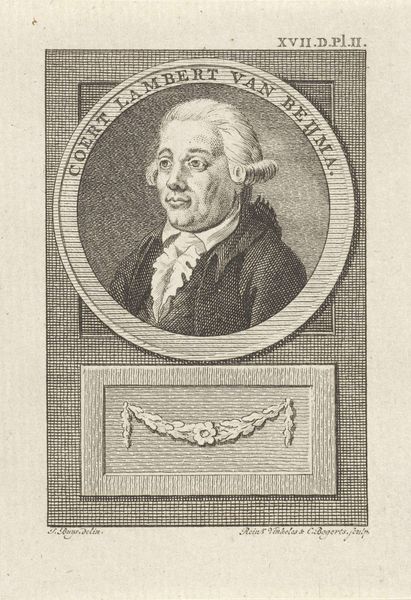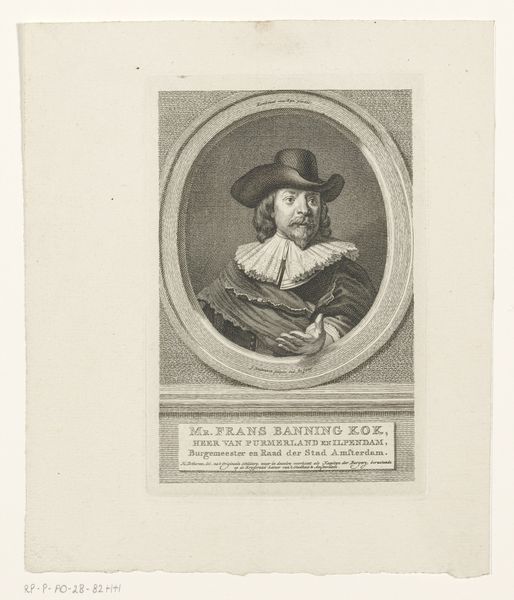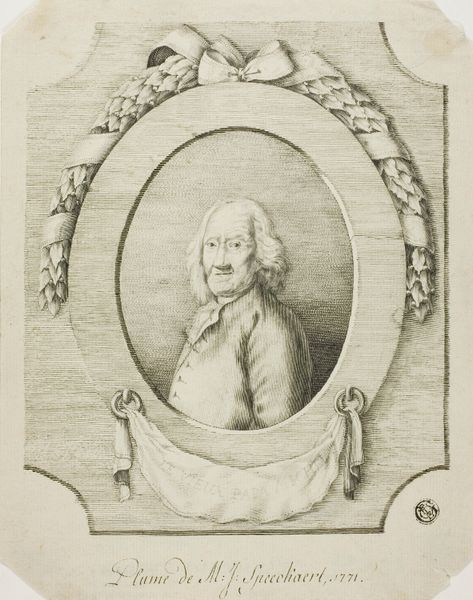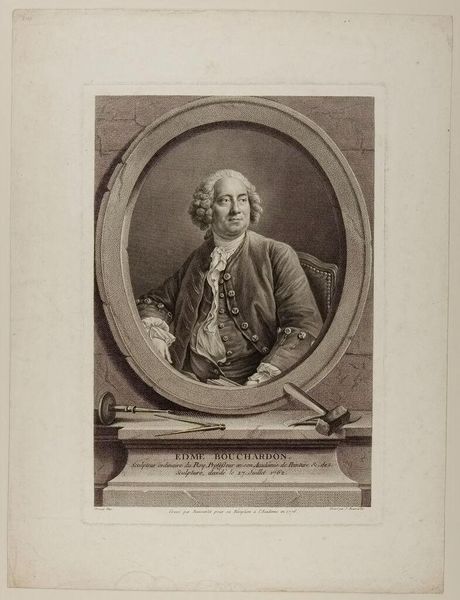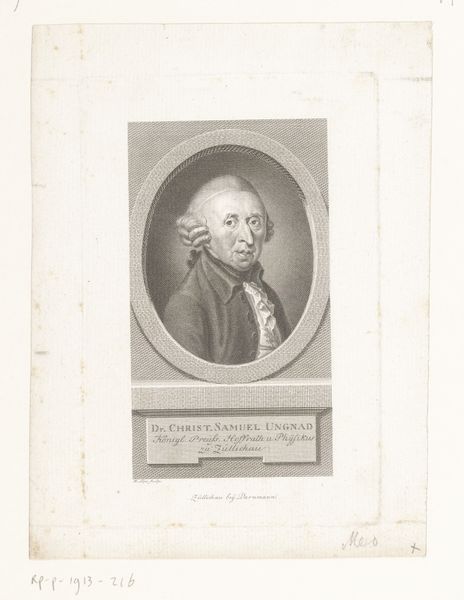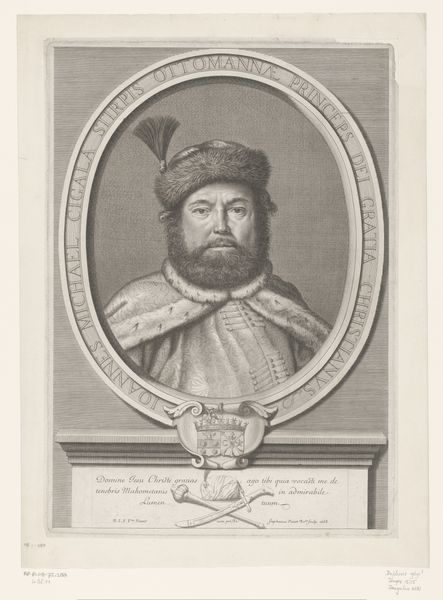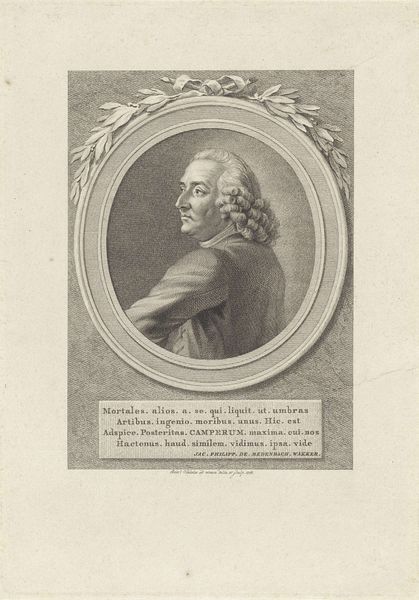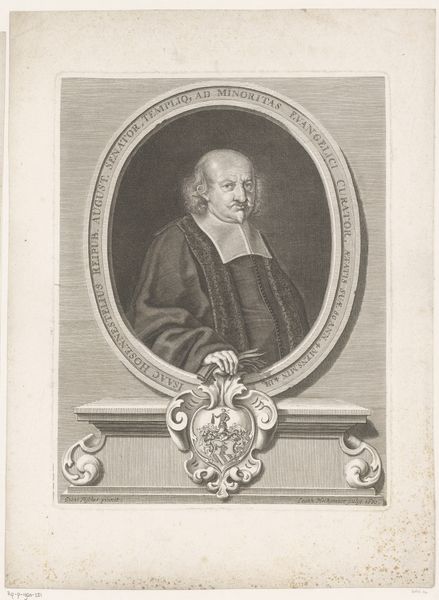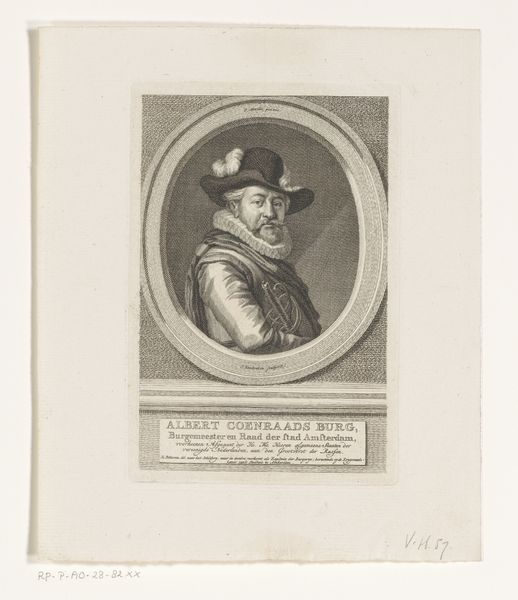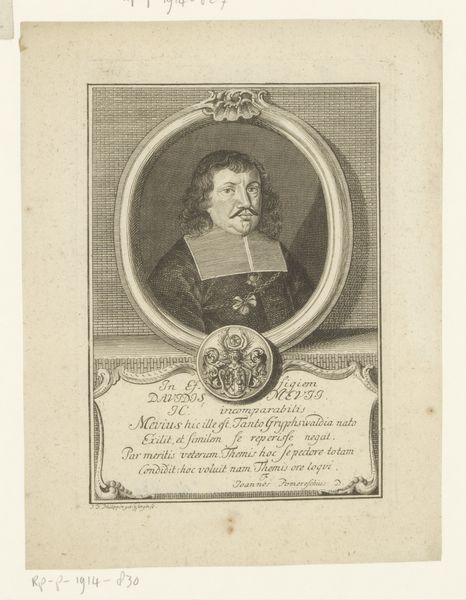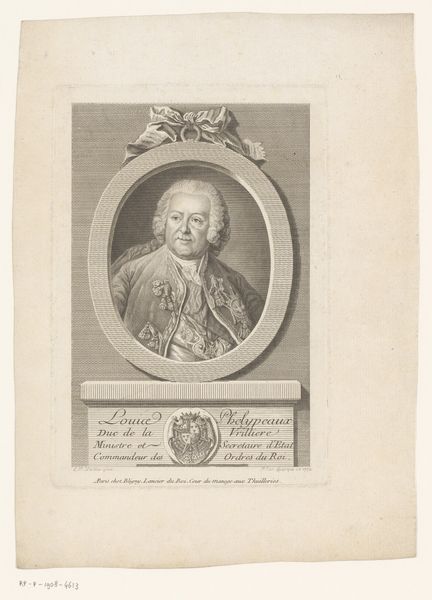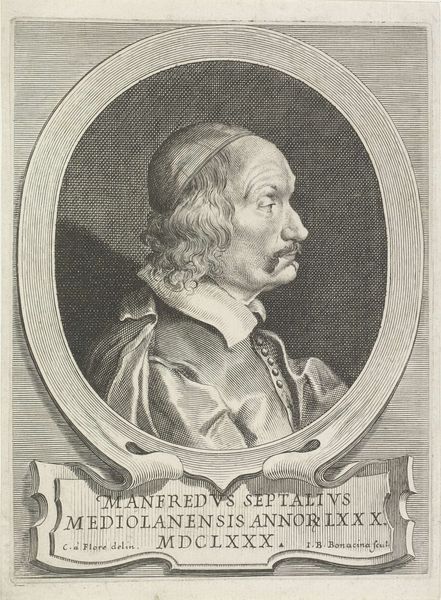
drawing, print, paper, ink, engraving
#
portrait
#
drawing
#
baroque
# print
#
paper
#
ink
#
engraving
Dimensions: height 242 mm, width 171 mm
Copyright: Rijks Museum: Open Domain
Curator: This engraving is entitled "Portret van Jan Kuiper," and it was created sometime after 1745 by Jacob Houbraken. It resides here at the Rijksmuseum. Editor: The most striking thing for me is the man’s face. There's such character etched into it; the long, droopy moustache gives him a wise, almost mystical aura. What is particularly significant about this sitter? Curator: Jan Kuiper was a prominent figure. The inscription tells us that he was commonly called Jan Praktiseer and that he fathered an impressive number of children - eighteen sons in his first marriage and two sons and two daughters in his second. In 1745, when this work was presumably created, he was still alive and living in Hiob's Gasthuis, a type of almshouse. This image likely served to solidify his identity as a sort of folk hero. Editor: Right, so the number of offspring speaks to the fulfillment of dynastic and cultural expectations and to what could be considered masculine vigor. Note the oval frame: It mimics the visual language of official portraiture and implies certain prominence while containing the subject. What of Houbraken's stylistic approach? Curator: Houbraken’s approach to portraiture emphasizes clarity and legibility, very much in line with Baroque conventions. There’s a deliberate rendering of minute detail, a clear desire to capture a sense of likeness. Engravings like this would have had an important social function, circulating images and ideas, fixing faces in the public imagination. It is intriguing how such detailed rendering of likeness works to ensure and establish social hierarchies. Editor: You make an important point about accessibility and its political effects. I think this adds to an understanding of why the figure is portrayed with such detail in facial features and clothing; to provide information about his personal and social identity to those that see it. His dark, somewhat tattered hat reads almost like a symbol itself; does it signify a certain station, or is it just happenstance? Curator: Well, I’m tempted to say happenstance, as his hat suggests a lack of high status, juxtaposed with the conventional trappings and function of stately portraiture. His direct gaze engages the viewer but it is rendered through the democratizing lens of print culture. Editor: And on that thought-provoking note, we leave our listeners to further consider the social nuances presented in Jacob Houbraken's portrait. Curator: An interesting reflection indeed, a portrait not just of a man, but of a moment in the shifting landscape of Dutch society and visual culture.
Comments
No comments
Be the first to comment and join the conversation on the ultimate creative platform.
